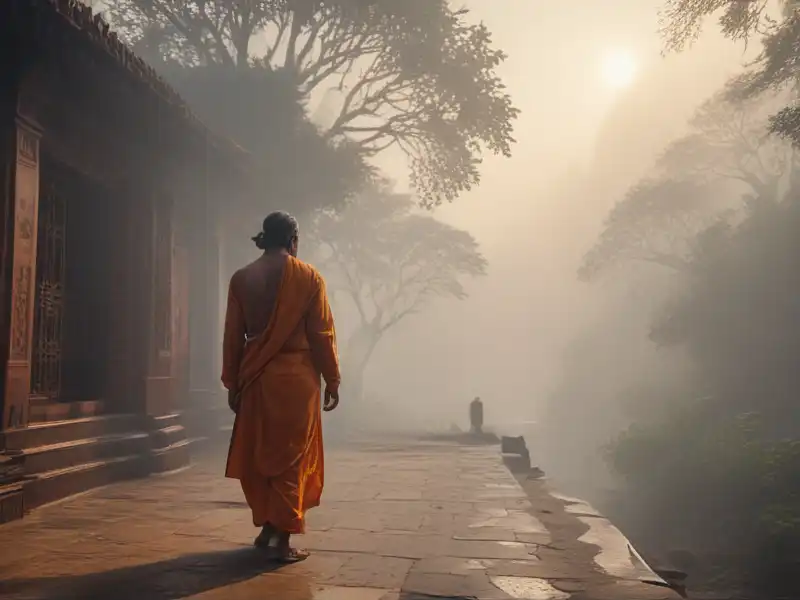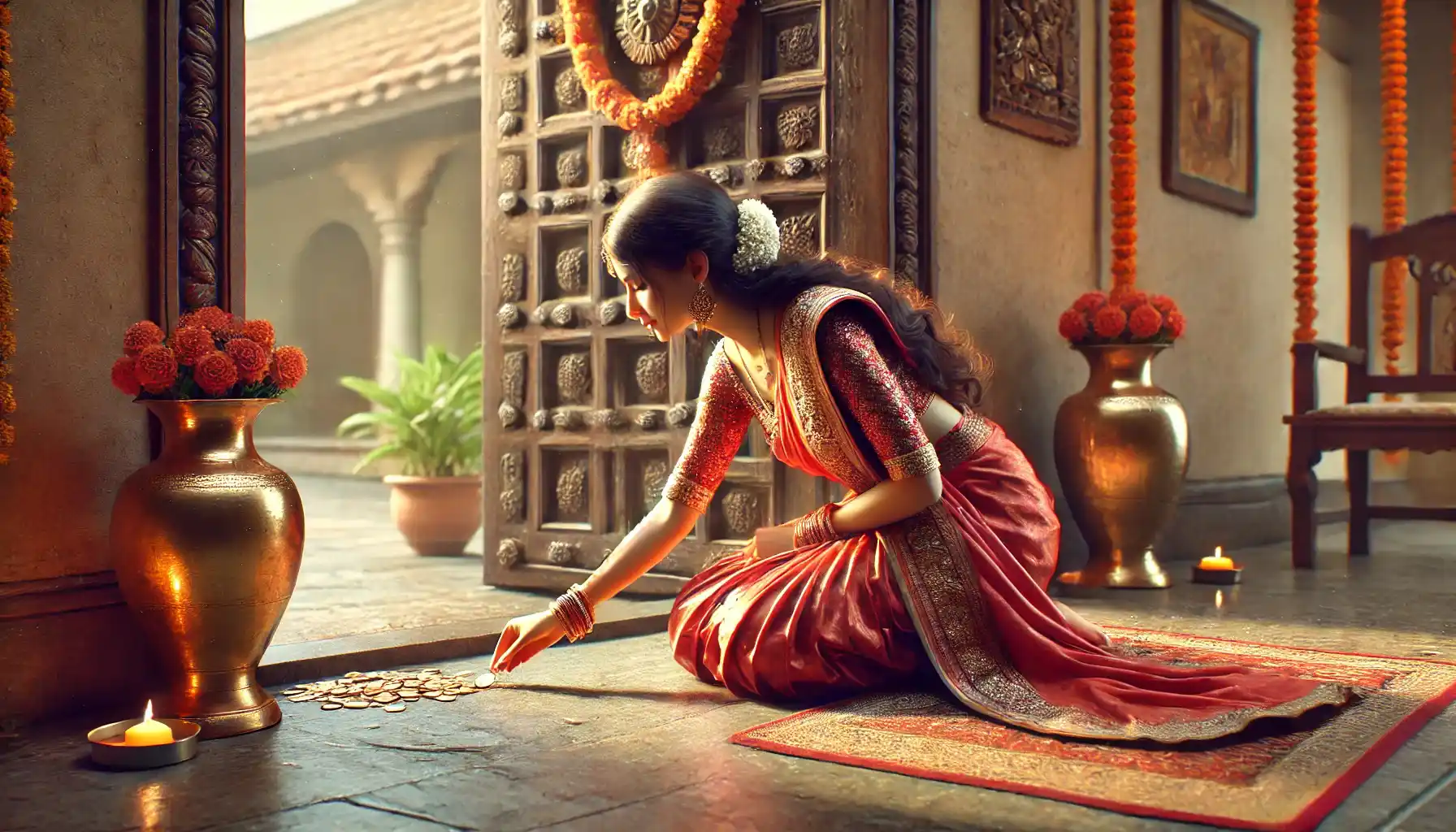
Spiritual Journeys: Cities in India for Soul-Searching and Serene Hotels
India is a land of diverse cultures, religions, and spiritual traditions. For centuries, seekers from all over the world have been drawn to its ancient wisdom and mystical energy. From the bustling st...The Adventurer's Guide to India: What to Expect and How to Prepare
Discover India’s best adventure activities. Learn essential preparation strategies, including gear selection, safety tips, and the use of location trackers, to ensure a safe and thrilling experience...Discover India's Vibrant Tapestry: A Journey Through Its Rich Culture and Traditions
Explore India's diverse culture through its festivals, art, and cuisine. Discover the unique traditions that weave together India's rich heritage and spiritual essence in this in-depth guide to the co...India without Filters: Unusual Traditions that Surprise Tourists
Traveling to India is like discovering a rare coin - at first glance, its customs and traditions may seem mysterious, like determining the 1936 Buffalo nickel value without any prior knowledge. But just as numismatists study the history and nuances of a coin to truly appreciate its value, tourists who take the time to understand India's customs will discover the deep significance of these age-old practices.
India is a country where tradition meets the present. Each region has its own unique rituals, and some of them can surprise, intrigue or even puzzle travelers unfamiliar with their meanings. Some rituals stem from spiritual beliefs, others are deeply rooted in historical or social structures. And all these traditions are an integral part of India's cultural code. So now we are going to take a look at some of India's most fascinating traditions that often leave tourists feeling the same way.
Indian Traditions: Unique Customs Every Traveler Should Know
India is more than a place, it is an experience. Here, starting with the bustling streets of Delhi and ending with the serene ghats of Varanasi, visitors are constantly met with unexpected cultural nuances that may seem unusual but hold deep meaning. So below you can learn some of the most intriguing traditions and customs that every traveler should know.
Eating with Hands: A Spiritual and Sensory Experience
For many Western travelers, the idea of eating with hands may seem primitive or unsanitary. However, in India, eating with your hands is a deeply spiritual and sensory experience.
The belief behind this practice is that hands are the most natural extension of the body, and by using them to eat, one connects more deeply with their food. According to Ayurveda (the ancient Indian system of medicine) each of the five fingers represents one of the five elements, i.e. earth, water, fire, air, and space. And bringing food to the mouth with the fingers should harmonize these elements, help your digestion and add to the overall experience of eating.
Another reason for eating with hands is the textural connection to food. In many Indian households, meals such as dal (lentils), rice, and curry are mixed together using fingers, enabling the eater to feel the texture and temperature before consuming it. So, it is also about mindful eating experience, which makes each bite more satisfying.
Tips for tourists: First of all, always use your right hand when eating, as the left is traditionally considered unclean and isn’t used for handling food. When enjoying dishes like roti or naan, break the bread gently with your fingers and use it to scoop up gravies rather than playing with your food. If you’re not used to eating this way, start in casual settings like street food stalls or traditional restaurants, where it’s a common and accepted practice.
Throwing Flowers into Water: Offerings to Gods and Farewell to Ancestors
IIf you walk along the banks of the Ganges River, you will probably see people placing or throwing flowers into the water. At first glance this may seem like a simple act, but in India this ritual carries a deep spiritual meaning.
In Hindu culture, flowers symbolize purity and devotion, that is why presenting them to deities is an act of respect and gratitude. Throwing flowers into water is part of several Hindu rituals, which include prayers for deceased ancestors, honoring deities, and religious festivals. The most famous example is the Ganga Aarti (a mesmerizing evening prayer ceremony) held in cities like Varanasi, Haridwar and Rishikesh, where flowers, oil lamps and incense float down the river.
This tradition is also connected to the belief that water is a purifier. So due to dipping flowers into holy rivers, Hindus believe they are sending positive energy and prayers to the heavens, cleansing their souls.
How tourists can participate respectfully:
If you wish to experience this ritual, buy a small floral offering (often sold near ghats) and place it gently into the river while offering a silent prayer.
Avoid throwing plastic or artificial items into the river, as while flowers decompose naturally, synthetic materials pollute the sacred water.
Join a local Aarti ceremony to see the tradition in its most bright and spiritual form.
Interesting fact: Similar floral offerings exist in other cultures, e.g., in Bali, Indonesia, where people float flowers in temple fountains, but in India, the practice is deeply connected to honoring ancestors and gods.

Weddings with Trees and Animals: When Traditions Go Beyond the Ordinary
In India, a wedding is a grand event with complex rituals and festivities. But some wedding traditions can leave tourists amazed - like the practice of marrying trees or even animals!
Why would anyone want to marry a tree? This practice has its roots in astrology and cultural beliefs. According to Hindu astrology, if a person has a manglik (born under an unlucky position on a planet), it is believed that their first marriage will bring bad luck to their spouse. To “neutralize” this misfortune, before marrying a person, he or she is sometimes married to a banana tree, a pipal or even a clay pot.
Animal marriages: blessing or superstition?
In some rural regions, women marry animals - dogs or donkeys - not out of choice but because, according to local traditions, such a union drives away evil spirits or bad omens. In Jharkhand and Odisha, for example, young girls who are considered cursed are married to animals as a symbolic ritual to purify them of bad luck before they marry a human being.
Fun fact: Despite their unusual nature, these “marriages” are not legally binding - they are merely symbolic and are performed to satisfy spiritual or astrological beliefs.
Money and Culture: Why Indians Throw Coins into Waters
The practice of throwing coins into rivers (especially the Ganges) is popular, as people believe it brings prosperity and good luck. Historically, Indian coins were made of copper, a metal that purifies water. Over time, this practical use evolved into a spiritual tradition, and even today many people throw coins into sacred rivers as a sign of gratitude or prayer.
Coins in Indian weddings and rituals
In Indian weddings, coins are also often exchanged as part of the dowry or given as a blessing to symbolize wealth and good fortune. But weddings aren't the only occasion where coins are used. For example, During housewarming ceremonies, a coin is placed at the base of the new house to attract prosperity and some people believe that a coin placed under the doorstep of a house or a store will help to ward off misfortune and bad luck.
Travel tip: If you are interested in the coin tradition of India and want to pick up an interesting variant, look at the variety of coins at Indian flea markets. There, they often sell old and rare coins that may be worth more than they seem. And if you come across an interesting or old variant, check its authenticity and value with the Coin ID Scanner app, as you never know where you can find riches!

Take the Indian Traditions with Respect and Curiosity
India's traditions are more than cultural oddities, they are a window into a civilization that has been thriving for thousands of years. Every custom, no matter how unusual it may seem to the visitor, has deep historical, spiritual or social significance. So here you may find some tips to help you navigate these unique traditions:
Observe before you participate. When faced with a cultural or religious practice, take the time to observe how the locals engage in it. Be it the practice of a prayer ceremony, offering flowers in the Ganges, or eating with your hands, an understanding of etiquette will help you participate appropriately.
Ask before you take photos. Although India is a photographer's paradise, not all rituals are meant to be captured. For example, during funeral rituals along the Ganges, taking photos may be considered disrespectful. Always ask permission before capturing cultural moments.
Respect religious sensitivities. Many traditions in India are deeply intertwined with religious beliefs, so it is important to address them with cultural humility. For example, at temples and sacred sites you should remove shoes before entering, dress modestly (especially in places of worship) and do not touch sacred objects without permission.
Accept that some traditions cannot be explained. While many customs have a clear historical or spiritual meaning, some may not make sense logically. But that's the beauty of traditions - they are often based more on faith than reason.
Explore India’s Wonders
The traditions of India may seem unexpected, but there is a deep meaning behind each one. The main thing is not to compare but to observe, not to judge but to be curious. So, accept new customs with respect and curiosity - then India will open up to you in all its diversity.